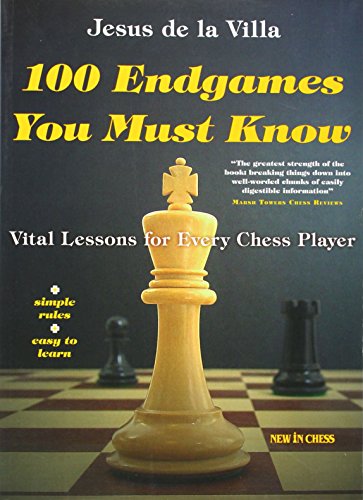Sinopsis
There are, contrary to what most amateurs believe, relatively few chess endgames one must know. Jesus de la Villa, an international grandmaster and former champion of Spain, presents the endgames that show up most frequently in practice, are easy to learn and contain ideas and concepts that are useful in more difficult positions. He brings you simple rules, guiding ideas at the beginning of each chapter, detailed and lively explanations, many diagrams, clear summaries of the most important themes, recommended exercises that will help you understand the material, and tests, divided in two parts: basic and final. The main thing De la Villa asks of you is to always understand WHY you play a move.
Críticas
If you really have no patience for endgames, at least read Jesus de la Villa's '100 Endgames You Must Know'. --Gary Walters Chess
The greatest strength of the book: breaking things down into well-worded chunks of easily digestible information. --Marsh Towers Chess Reviews
She said she had really enjoyed De la Villa's '100 Endgames You Must Know' and had made flashcards out of the 100 positions. One side of the card had the position, the solution was written out on the reverse, and she quizzed herself until she knew all 100. --Elisabeth Vicary, USCF Online, on a conversation with Alexandra Kosteniuk
The greatest strength of the book: breaking things down into well-worded chunks of easily digestible information. --Marsh Towers Chess Reviews
She said she had really enjoyed De la Villa's '100 Endgames You Must Know' and had made flashcards out of the 100 positions. One side of the card had the position, the solution was written out on the reverse, and she quizzed herself until she knew all 100. --Elisabeth Vicary, USCF Online, on a conversation with Alexandra Kosteniuk
The greatest strength of the book: breaking things down into well-worded chunks of easily digestible information. --Marsh Towers Chess Reviews
She said she had really enjoyed De la Villa's '100 Endgames You Must Know' and had made flashcards out of the 100 positions. One side of the card had the position, the solution was written out on the reverse, and she quizzed herself until she knew all 100. --Elisabeth Vicary, USCF Online, on a conversation with Alexandra Kosteniuk
"Sobre este título" puede pertenecer a otra edición de este libro.
